Anime is a unique style of animation that started in Japan and has now become popular all over the world. It stands out because of its colorful artwork, imaginative themes, and lively characters. Anime is different from other kinds of animation because of these special features.
Cute:1pgioptyfri= anime has become very popular with people of all ages. Its wide range of genres and interesting stories attract many fans. Whether you like action, romance, or fantasy, anime has something for everyone to enjoy.
This article will explore the many aspects of cute:1pgioptyfri= anime. We will look at its history, different types, famous series and movies, and its cultural impact. We will also discuss how anime is made, its global influence, and the fan community.
Additionally, we will talk about current trends and the future of anime. By the end of this article, you will have a better understanding of why cute:1pgioptyfri= anime is so beloved and how it continues to grow and evolve.
Relevance and Popularity of Cute:1pgioptyfri= Anime
Cute:1pgioptyfri= anime has become very popular around the world. People of all ages enjoy watching it, from kids to adults. This kind of anime offers a wide variety of stories and styles, making it appealing to many different tastes.
One reason for its popularity is the engaging and diverse genres it offers. Whether you like thrilling adventures, touching love stories, or exciting battles, cute:1pgioptyfri= anime has something for everyone. This variety keeps fans coming back for more.
Another factor is the way anime connects with viewers. The characters are often relatable, and the stories can be very emotional and inspiring. This deep connection makes people feel more involved and attached to the anime they watch.
The rise of streaming services has also helped cute:1pgioptyfri= anime become more accessible. Platforms like Crunchyroll and Netflix make it easy for fans to watch their favorite shows anytime, anywhere. This convenience has helped anime reach a global audience.
Overall, the relevance and popularity of cute:1pgioptyfri= anime continue to grow. Its ability to offer diverse and engaging content, connect with viewers emotionally, and be easily accessible makes it a beloved entertainment choice for many people worldwide.
Types and Categories of Cute:1pgioptyfri= Anime
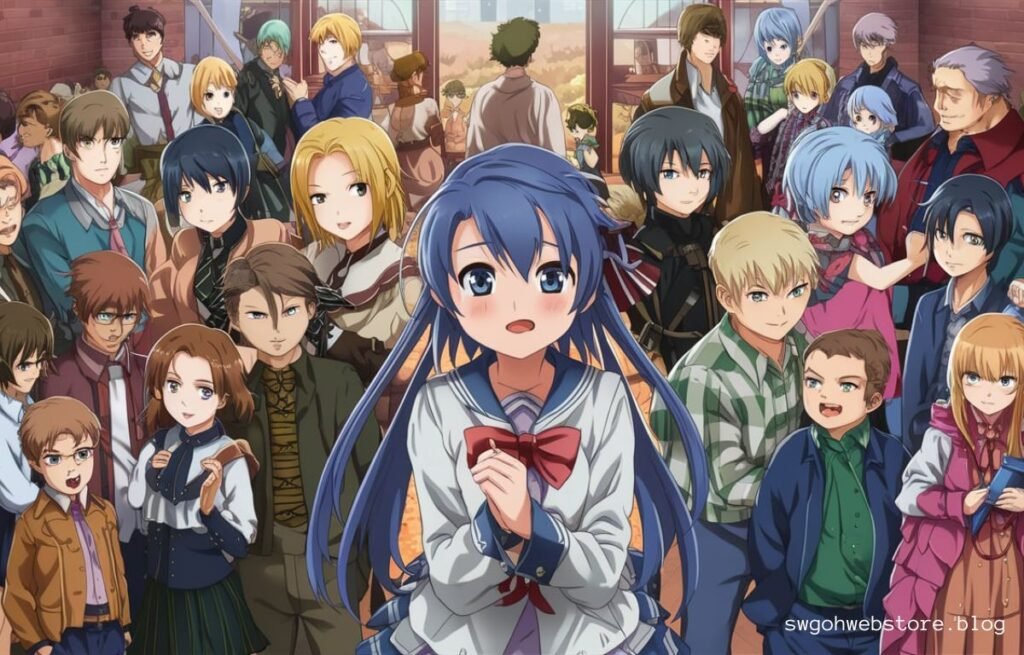
Cute:1pgioptyfri= anime comes in many different types and categories, each aimed at different audiences. One popular category is Shonen, which is targeted towards young boys. Shonen anime often features action, adventure, and coming-of-age stories. Examples include “Dragon Ball,” “Naruto,” and “One Piece.”
Shojo anime is aimed at young girls and focuses on romance, relationships, and personal growth. Some well-known shojo anime are “Sailor Moon,” “Fruits Basket,” and “Ouran High School Host Club.” These stories often highlight emotional and heartfelt moments, making them very engaging.
Seinen anime is created for adult men and usually includes more complex and mature themes. It can be darker and more serious than shonen anime. Examples of seinen anime are “Berserk,” “Tokyo Ghoul,” and “Ghost in the Shell.” These shows often explore deeper psychological and societal issues.
Josei anime is targeted toward adult women and often features realistic romantic relationships and life experiences. Series like “Nana” and “Honey and Clover” fall into this category. They offer a more mature perspective on love and personal challenges.
Finally, Kodomo anime is designed for children. It emphasizes simple, educational, and entertaining content. Popular examples include “Doraemon” and “Pokémon.” These shows are fun and easy to understand, making them perfect for younger viewers. Additionally, anime spans many other genres such as Mecha (focused on robots, like “Gundam”) and Isekai (where characters are transported to another world, like “Sword Art Online”), offering something for everyone.
Historical Context
Anime has a rich history that began in the early 20th century in Japan. The first recorded Japanese animations appeared in the 1910s and were heavily influenced by Western animation. However, anime quickly developed its own unique style, setting the stage for what it would become.
During the 1920s and 1930s, anime was still in its experimental phase, with many short films being produced. The 1940s and 1950s saw the post-war era bringing significant changes, including the rise of iconic studios like Toei Animation. These years laid the foundation for the anime industry.
The 1960s and 1970s are considered the golden age of anime. This period saw the emergence of popular television series, which made anime more accessible to the general public. Notable milestones include the creation of Osamu Tezuka’s “Astro Boy,” which became a huge success and influenced many future works.
The 1980s and 1990s brought international recognition to anime. Original Video Animation (OVA) became popular, allowing for more creative freedom and higher quality productions. During this time, anime like “Mobile Suit Gundam” and “Akira” gained worldwide acclaim, expanding anime’s reach beyond Japan.
From the 2000s to the present, the digital revolution has transformed anime production. Modern technology has made it easier and faster to create anime, leading to mainstream global success. Shows like “Naruto,” “Attack on Titan,” and “Demon Slayer” have captivated audiences around the world, solidifying anime’s place in global popular culture.
Notable Cute:1pgioptyfri= Anime Series and Movies
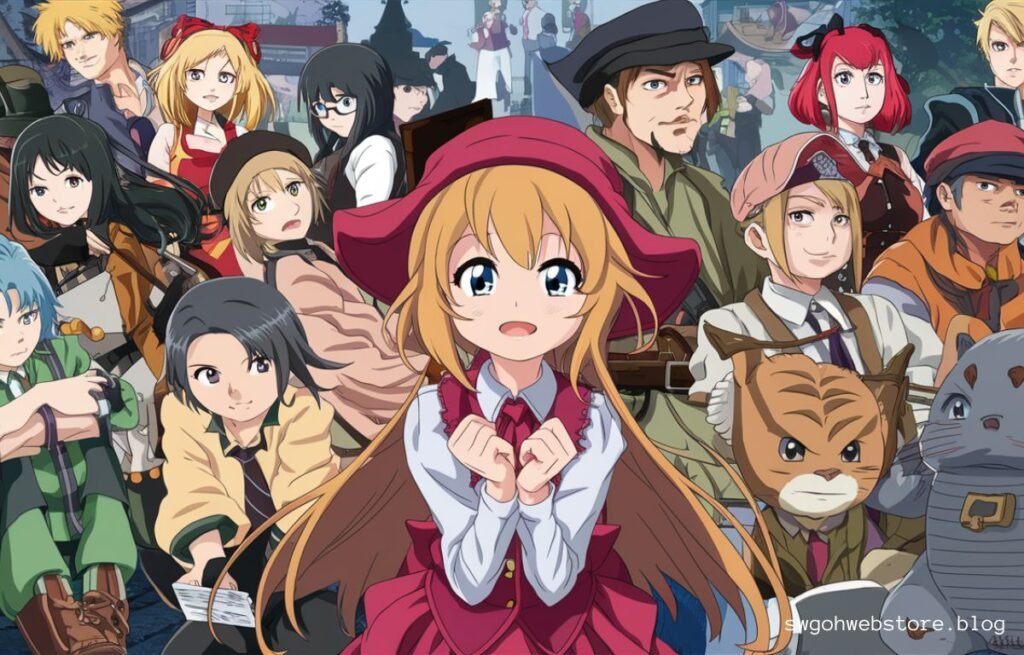
There are many cute:1pgioptyfri= anime series and movies that have become beloved by fans around the world. These works are known for their memorable characters, engaging stories, and artistic excellence.
Classic Series
Some anime series have stood the test of time and remain influential even today. Examples include:
- “Astro Boy”: Created by Osamu Tezuka, this series is considered the first successful anime television show and has had a lasting impact on the medium.
- “Mobile Suit Gundam”: This series popularized the mecha genre and introduced complex political and social themes.
- “Cowboy Bebop”: Known for its stylish animation and blend of genres, it continues to be a favorite among anime fans.
Also Read: EzClasswork: Revolutionizing Education Through Gaming
Modern Masterpieces
Recent years have brought us many critically acclaimed series that have captured the hearts of viewers:
- “Attack on Titan”: With its intense action and deep story, it has gained a massive following worldwide.
- “My Hero Academia”: This series combines superhero themes with the classic shonen formula, making it highly popular among fans of all ages.
- “Demon Slayer”: Known for its stunning animation and emotional depth, it has quickly become one of the most popular anime of the modern era.
Critically Acclaimed Movies
Anime movies have also received international acclaim, showcasing the medium’s potential for storytelling:
- “Spirited Away”: Directed by Hayao Miyazaki and produced by Studio Ghibli, this film won an Academy Award and is celebrated for its imaginative story and beautiful animation.
- “Your Name”: Directed by Makoto Shinkai, this film became a global hit with its touching story and breathtaking visuals.
- “Weathering With You”: Another film by Makoto Shinkai, it continues to build on his reputation for creating visually stunning and emotionally resonant movies.
Influential Directors and Studios
Several directors and studios have left a significant mark on the anime industry:
- Hayao Miyazaki: Co-founder of Studio Ghibli, known for masterpieces like “My Neighbor Totoro” and “Princess Mononoke.”
- Satoshi Kon: Celebrated for his unique storytelling and psychological themes in films like “Perfect Blue” and “Paprika.”
- Makoto Shinkai: Known for his beautifully animated and emotionally compelling films.
Studios such as Studio Ghibli, Madhouse, and Kyoto Animation are renowned for their high-quality productions and have contributed immensely to the growth and popularity of anime globally.
Themes and Styles in Cute:1pgioptyfri= Anime
Cute:1pgioptyfri= anime is known for its diverse and engaging themes and unique stylistic elements. These aspects make it a captivating and memorable form of entertainment.
Common Themes
Anime often explores universal themes that resonate with audiences worldwide:
- Friendship: Many anime series highlight the importance of friendship and teamwork. Characters often rely on their friends to overcome challenges and grow.
- Perseverance: Stories of characters who face difficult trials and never give up are common. This theme is inspiring and motivational.
- Good vs. Evil: The classic battle between good and evil is a frequent theme, with heroes standing up against villains to save the world or protect loved ones.
Unique Stylistic Elements
Anime is easily recognizable by its distinct visual style and presentation:
- Exaggerated Facial Expressions: Characters often show their emotions in an exaggerated way, making it easy for viewers to understand their feelings.
- Vibrant Colors: Anime uses a wide range of bright and vibrant colors to create visually appealing scenes and characters.
- Dynamic Action Sequences: Action scenes in anime are often highly stylized and energetic, with fast movements and dramatic effects enhancing the excitement.
Influence of Japanese Culture
Anime is deeply rooted in Japanese culture and often reflects its traditions, values, and societal issues:
- Shinto and Buddhist Philosophy: Elements of these philosophies frequently appear in anime, influencing storylines and character development.
- Historical and Contemporary Life: Many anime series depict aspects of Japanese history or modern life, providing insight into the country’s culture and daily experiences.
Anime’s blend of relatable themes, distinctive visual style, and cultural richness makes it a unique and powerful medium of storytelling. Whether it’s through the emotional bonds between characters, the vibrant and imaginative worlds they inhabit, or the underlying cultural references, cute:1pgioptyfri= anime offers a unique viewing experience that appeals to a broad audience.
Techniques Used in Cute:1pgioptyfri= Anime
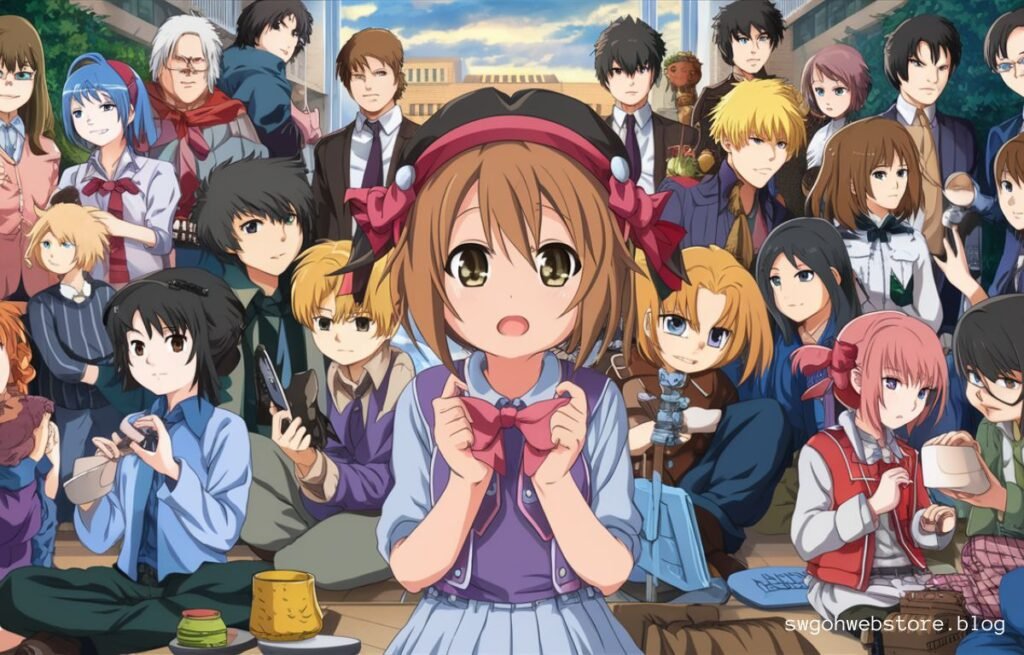
Cute:1pgioptyfri= anime utilizes various techniques to bring its vibrant and imaginative stories to life. These methods combine traditional artistry with modern technology to create unique and engaging experiences.
Traditional Animation Techniques
Traditionally, anime was created using hand-drawn frames, a process known as cel animation. Artists would draw each frame by hand, which were then photographed and compiled to create a fluid motion. This labor-intensive technique gives anime its characteristic look, with detailed backgrounds and expressive characters.
Digital Animation and CGI
In recent years, the use of digital tools and CGI (Computer-Generated Imagery) has become more common in anime production. Digital animation allows for more efficient workflows and can enhance the visual quality of anime. CGI is often used for complex scenes, such as dynamic action sequences or detailed backgrounds, adding depth and realism to the animation.
Voice Acting
Voice acting, or “seiyuu,” is a crucial component of anime. Talented voice actors bring characters to life by giving them distinct personalities and emotions. The quality of voice acting can greatly influence the viewer’s connection to the characters and the overall impact of the anime.
Music and Sound Design
Music and sound design play vital roles in setting the tone and atmosphere of cute:1pgioptyfri= anime. Iconic soundtracks and theme songs often become synonymous with the series they accompany. Background music helps convey the mood of scenes, while sound effects enhance actions and emotions, making the viewing experience more immersive.
Storyboarding and Layouts
Before actual animation begins, detailed storyboards and layouts are created. Storyboards outline the sequence of events and key frames, serving as a visual script for the animators. Layouts provide detailed backgrounds and camera angles, ensuring consistency and coherence throughout the anime.
Coloring and Shading
Coloring and shading techniques are essential in giving anime its vibrant and distinctive look. Artists use a combination of bold colors and subtle shading to add depth and dimension to characters and scenes. This helps to highlight emotions, actions, and environmental details, making the animation visually engaging.
By blending traditional and modern techniques, cute:1pgioptyfri= anime continues to innovate and captivate audiences. The combination of hand-drawn artistry, digital advancements, skilled voice acting, and meticulous sound design all contribute to the unique and enchanting world of anime.
Impact of Cute:1pgioptyfri= Anime on Global Culture
Cute:1pgioptyfri= anime has significantly influenced global culture, reaching far beyond its origins in Japan. Its unique storytelling and visual style have captivated audiences worldwide, contributing to a broader cultural exchange.
Anime’s Reach Beyond Japan
Anime’s popularity extends well beyond Japan, with a large and dedicated fanbase in countries such as the United States, Canada, and many European nations. International conventions and the availability of anime on streaming platforms have made it easier for fans around the world to access and enjoy their favorite shows.
Influence on Western Media
Anime has had a noticeable impact on Western media, inspiring the creation of animated series and films that adopt anime-style elements. Shows like “Avatar: The Last Airbender” and “Teen Titans” blend Western storytelling with anime-inspired art and action sequences, showcasing the cross-cultural influence of anime.
Also Read: Efficient Packing Tips by smallanalyzer.com
Cultural Exchange Through Anime
Anime serves as a medium for cultural exchange, introducing global audiences to Japanese customs, language, and societal norms. Through anime, viewers gain insights into Japanese traditions, holidays, and daily life, fostering a greater understanding and appreciation of Japanese culture. This exposure can lead to increased interest in learning the Japanese language and exploring other aspects of Japanese culture.
Major Anime Conventions and Events
Events like Anime Expo in Los Angeles and Comiket in Tokyo draw thousands of fans from around the world, celebrating anime culture and creating a sense of community. These conventions feature panels, screenings, and cosplay competitions, providing a platform for fans to connect and share their passion for anime.
Fan Community and Cosplay
Fan communities play a crucial role in the spread and influence of cute:1pgioptyfri= anime. Online forums, social media groups, and fan sites allow enthusiasts to discuss episodes, share fan art, and recommend series to each other. Cosplay, or costume play, is a popular activity within the anime community, where fans dress up as their favorite characters, showcasing impressive craftsmanship and creativity. This practice has gained global popularity, further spreading anime’s cultural impact.
Merchandise and Commercial Success
The anime merchandise market is vast, with products ranging from figurines and posters to clothing and accessories. This market generates significant revenue and allows fans to express their fandom tangibly. Popular products often feature characters from hit series, becoming highly sought after by fans.
Overall, the impact of cute:1pgioptyfri= anime on global culture is profound and multifaceted. Its ability to cross cultural boundaries, influence other media, and foster a sense of community among fans worldwide underscores the enduring appeal and significance of anime in today’s global society.
Major Cute:1pgioptyfri= Anime Conventions and Events
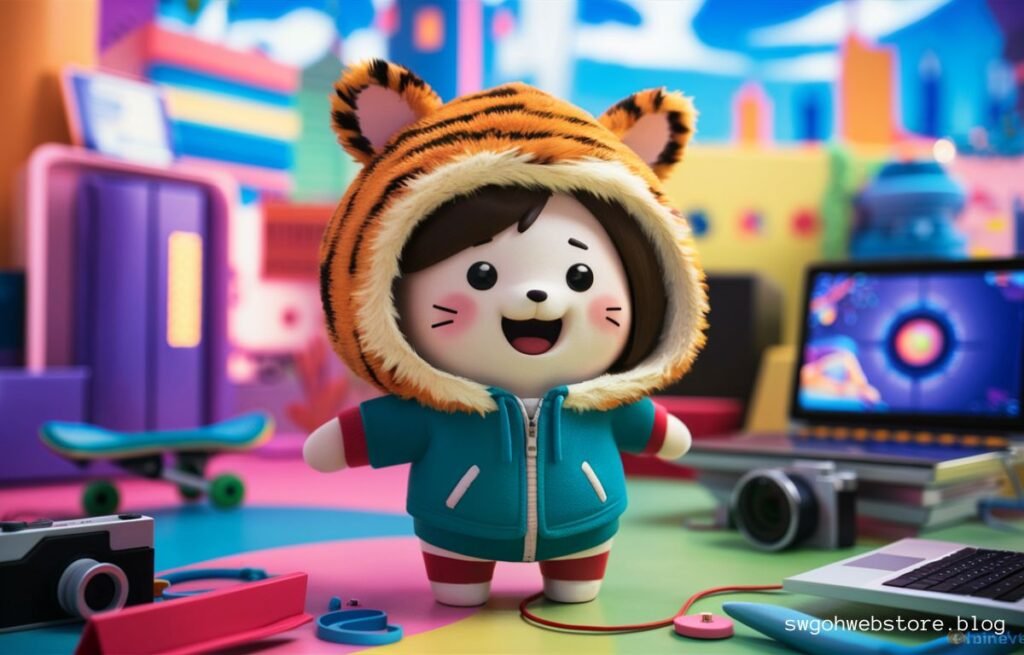
Cute:1pgioptyfri= anime conventions and events play a significant role in celebrating and promoting anime culture. These gatherings bring fans together to share their passion, meet creators, and participate in various activities. Here are some of the major conventions and events:
Anime Expo
Anime Expo, held annually in Los Angeles, is the largest anime convention in North America. It features a wide range of activities, including panel discussions, screenings of popular and upcoming anime, cosplay competitions, and concerts by anime music artists. Fans can also meet voice actors, directors, and other industry professionals, making it a must-attend event for anime enthusiasts.
Comiket (Comic Market)
Comiket, short for Comic Market, is held biannually in Tokyo and is the world’s largest doujinshi (self-published works) fair. It showcases a vast array of fan-created content, including manga, art, and novels. Comiket is a unique event where fans can buy and sell their creations, interact with like-minded individuals, and discover new talent. It also features cosplay, attracting participants from all over the world.
Otakon
Otakon, held in Washington, D.C., is another major anime convention in the United States. It offers a variety of activities such as anime screenings, gaming tournaments, and workshops. Otakon also hosts guest panels featuring notable figures from the anime industry. The convention is known for its welcoming community and focus on all aspects of Asian pop culture.
Anime Matsuri
Anime Matsuri takes place in Houston, Texas, and is one of the largest anime conventions in the southern United States. It includes events like fashion shows, car shows featuring anime-themed vehicles, and extensive exhibitor halls with a wide range of merchandise. Anime Matsuri also offers opportunities to meet voice actors, attend cosplay contests, and participate in various interactive activities.
Japan Expo
Japan Expo, held in Paris, France, is one of the biggest anime conventions in Europe. It celebrates Japanese culture broadly, including anime, manga, video games, music, and traditional arts. The expo features concerts, martial arts demonstrations, cosplay competitions, and booths showcasing the latest in anime and manga. It attracts a diverse audience from across Europe, making it a significant event for anime fans.
Other Significant Conventions
Other notable conventions include Sakura-Con in Seattle, A-Kon in Texas, and Anime NYC in New York. These events similarly offer a mix of screenings, panels, cosplay, and merchandise, providing fans with numerous opportunities to engage with anime culture and connect with fellow enthusiasts.
These major cute:1pgioptyfri= anime conventions and events are vital to the anime community, offering fans a chance to immerse themselves in their favorite medium, meet others who share their interests, and celebrate the rich and diverse world of anime.
Fan Community and Cosplay
The fan community and cosplay are integral parts of the cute:1pgioptyfri= anime culture, creating a vibrant and interactive environment for enthusiasts around the world. These aspects foster a sense of belonging and allow fans to express their passion creatively.
Role of Fan Communities
Fan communities are essential to the anime ecosystem. They provide platforms for fans to discuss their favorite shows, share fan art, and recommend series to one another. Online forums like Reddit, MyAnimeList, and dedicated fan websites allow enthusiasts to connect, exchange ideas, and stay updated on the latest anime news. These communities help fans deepen their appreciation for anime and find like-minded individuals to share their interests with.
Online Forums and Discussions
Online forums and discussion boards are popular gathering places for anime fans. Websites like Reddit have dedicated subreddits for various anime series, where fans can engage in detailed discussions about episodes, character development, and plot theories. MyAnimeList offers a comprehensive database of anime, allowing users to track what they’ve watched, read reviews, and join community discussions. These platforms foster a sense of global connection among anime fans.
Cosplay Culture
Cosplay, short for costume play, is a popular activity where fans dress up as their favorite anime characters. This practice involves creating or purchasing costumes that accurately represent the character’s appearance, often including detailed accessories and props. Cosplay is not just about wearing a costume; it also involves embodying the character’s personality and mannerisms.
Cosplay at Conventions
Anime conventions are the primary venues for cosplay. Fans showcase their costumes, participate in contests, and take part in photoshoots. Conventions like Anime Expo, Comiket, and Otakon feature elaborate cosplay competitions where participants can display their creativity and craftsmanship. These events celebrate the hard work and dedication of cosplayers, often awarding prizes for the best costumes.
Craftsmanship and Creativity
Cosplaying requires significant skill and creativity. Many cosplayers spend months designing and constructing their costumes, learning techniques like sewing, armor crafting, and makeup artistry. The attention to detail and commitment to authenticity are impressive, with some costumes replicating characters down to the smallest detail.
Impact on Anime Culture
Cosplay and fan communities have a significant impact on anime culture. They help promote anime series, foster a sense of community, and encourage creative expression. Through fan art, fan fiction, and cosplay, fans contribute to the broader anime culture, making it a dynamic and ever-evolving phenomenon.
The fan community and cosplay activities in cute:1pgioptyfri= anime culture provide a platform for fans to engage deeply with their favorite series, express their creativity, and connect with others who share their passion. These elements enrich the anime experience and help sustain its popularity worldwide.
Merchandise and Commercial Success
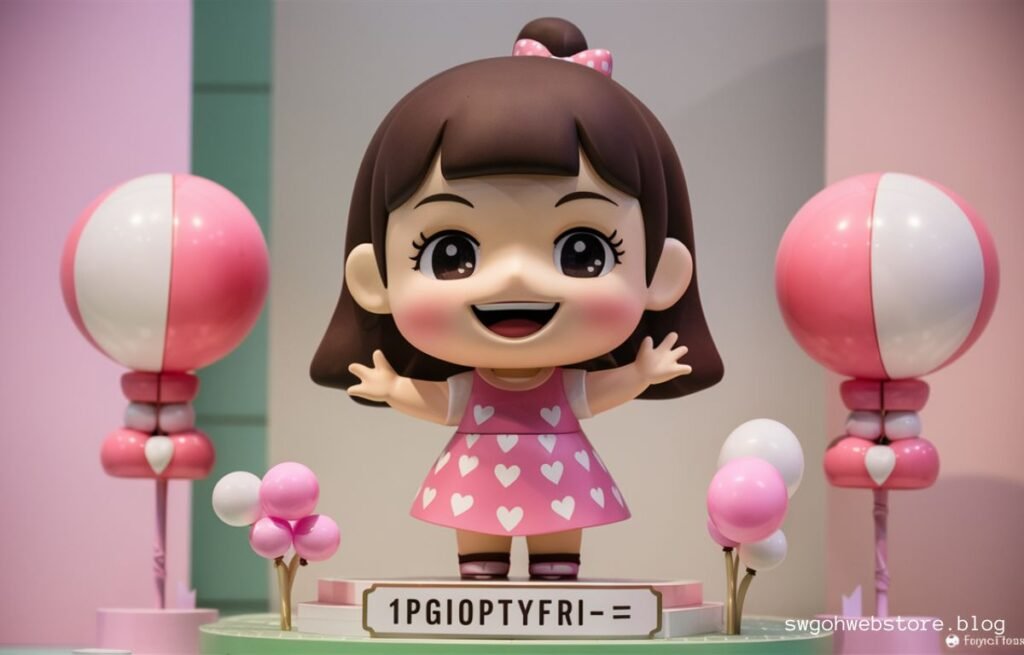
Merchandise plays a crucial role in the cute:1pgioptyfri= anime industry, serving as both a revenue generator and a means for fans to express their passion tangibly. The diverse range of anime-related products contributes significantly to the industry’s economic impact and global appeal.
Anime Merchandise Market
The anime merchandise market is expansive and diverse, offering a wide array of products that cater to fans of all ages and interests. These products include:
- Figurines and Collectibles: Detailed figurines of popular anime characters are highly sought after by collectors. Limited-edition releases and special variants often command premium prices.
- Posters and Art Prints: Artwork featuring scenes and characters from beloved anime series are popular choices for fans looking to decorate their living spaces.
- Clothing and Accessories: Apparel such as t-shirts, hoodies, and cosplay costumes allow fans to display their favorite characters and show their fandom in everyday life.
- Plush Toys and Keychains: Cute and cuddly plush toys and keychains featuring anime characters are popular among fans of all ages.
- Stationery and School Supplies: Items like notebooks, pens, and pencil cases adorned with anime artwork are popular among students and collectors alike.
Popularity and Demand
Anime merchandise enjoys widespread popularity among fans worldwide. The appeal of owning tangible items that celebrate beloved characters and series motivates fans to purchase merchandise both online and at conventions. The demand for merchandise often reflects the success and cultural impact of specific anime series and characters.
Also Read: Mastering Aesthetic:u1p3guqnx8w= wallpaper
Collectibility and Rarity
Limited-edition merchandise and exclusive releases drive collectibility within the anime community. Fans avidly seek out rare items and collaborate through online marketplaces and communities to buy, sell, and trade collectibles. This aspect of the merchandise market adds a layer of excitement and value to the anime fandom experience.
Economic Impact
The sale of anime merchandise contributes significantly to the global economy, with substantial revenue generated from both domestic and international markets. Merchandise sales complement revenue streams from anime production, licensing, and streaming, making it a vital component of the industry’s commercial success.
Promotion and Branding
Merchandise serves as a powerful tool for promoting anime series and expanding their reach. Licensed merchandise featuring popular characters helps to build brand recognition and maintain fan engagement between anime seasons or film releases. Merchandise collaborations with fashion brands, toy manufacturers, and other industries further extend anime’s influence into mainstream consumer culture.
Fan Engagement and Community Building
The availability of merchandise fosters a sense of community among anime fans. Events like anime conventions and online forums provide platforms for fans to showcase their collections, exchange merchandise, and connect with fellow enthusiasts. Merchandise-related activities, such as cosplay and fan art, enhance fan engagement and contribute to the vibrant and interactive anime community.
Streaming Platforms and Accessibility
Streaming platforms have revolutionized the way audiences access and enjoy cute:1pgioptyfri= anime, making it more convenient and widespread than ever before. These platforms offer extensive libraries of anime series and movies, catering to diverse tastes and preferences.
Major Anime Streaming Services
Several prominent streaming services specialize in anime content, providing subscribers with access to a vast selection of titles:
- Crunchyroll: Known for its extensive library of anime series and simulcasts, Crunchyroll offers both subbed and dubbed versions of popular titles. It is a go-to platform for anime enthusiasts seeking the latest episodes and classics alike.
- Funimation: Acquired by Sony, Funimation focuses on dubbed anime content, making it popular among viewers who prefer English-language versions. It also offers simulcasts and a wide range of classic and current series.
- Netflix: Netflix has expanded its anime catalog significantly, featuring original anime productions alongside licensed titles. Its global reach and user-friendly interface make it accessible to a wide audience.
- Hulu: Hulu provides a selection of anime series and films, catering to subscribers who enjoy both subbed and dubbed content. It offers a mix of classics and newer releases.
Impact on Anime Consumption
Streaming platforms have democratized anime consumption by offering on-demand access to a diverse range of titles. Viewers can binge-watch entire series or explore new genres and recommendations based on their preferences. This accessibility has contributed to the global popularity and mainstream acceptance of anime as a form of entertainment.
Regional Availability and Licensing
While streaming platforms enhance accessibility, regional licensing agreements can affect the availability of certain anime titles. Viewers may encounter restrictions based on their geographical location, prompting some to use virtual private networks (VPNs) to access content not available in their region. Platforms continue to negotiate licensing deals to expand their global content offerings.
Advantages of Streaming
Streaming platforms offer several advantages over traditional distribution methods:
- Convenience: Viewers can watch anime anytime, anywhere, on multiple devices, without the need to purchase physical media.
- Variety: Platforms curate extensive libraries that include genres ranging from action and romance to fantasy and science fiction, catering to diverse audience preferences.
- Discoverability: Recommendation algorithms help users discover new anime based on their viewing history and preferences, facilitating exploration of lesser-known titles.
Subscriber Engagement and Community
Streaming platforms support community engagement through features like user reviews, forums, and social media integration. Fans can discuss episodes, share recommendations, and participate in virtual watch parties, fostering a sense of camaraderie and shared enthusiasm among anime enthusiasts globally.
Future Trends and Accessibility
As technology advances, streaming platforms may incorporate features such as virtual reality (VR) and augmented reality (AR) to enhance the anime viewing experience. Continued expansion into new markets and partnerships with content creators will likely further increase accessibility and viewer engagement.
In summary, streaming platforms have transformed the way audiences worldwide discover, consume, and engage with cute:1pgioptyfri= anime. Their convenience, diverse content offerings, and global accessibility have played a pivotal role in anime’s growing popularity and cultural impact on a global scale.
Challenges and Controversies in Cute:1pgioptyfri= Anime
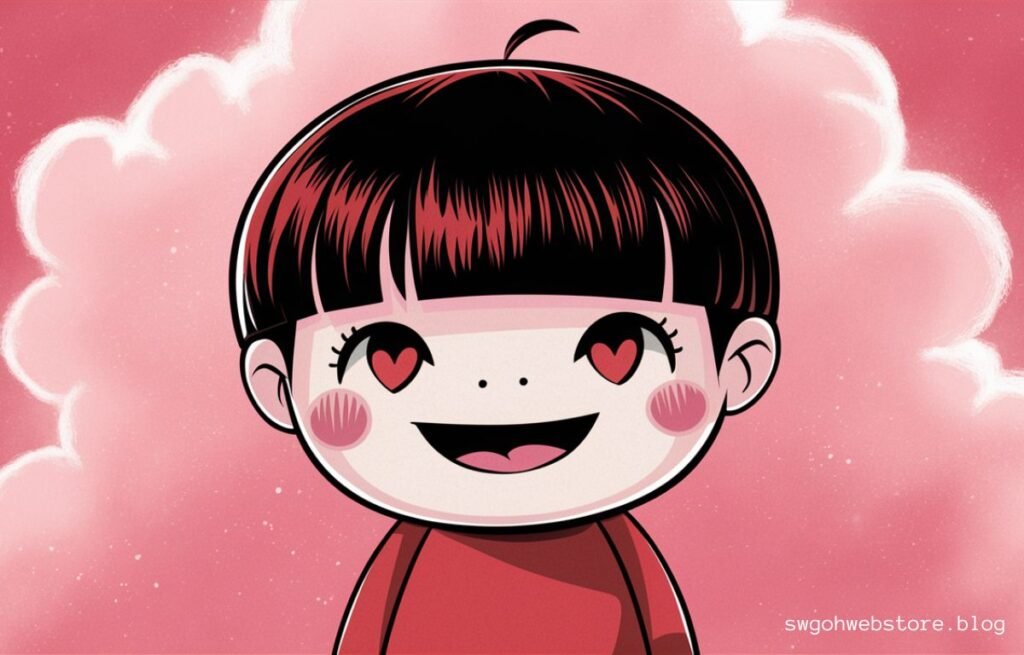
Cute:1pgioptyfri= anime, despite its global popularity, faces several challenges and controversies that impact its production, distribution, and reception. These issues reflect broader concerns within the industry and among its diverse audience.
Censorship and Content Regulation
One significant challenge cute:1pgioptyfri= anime encounters is censorship and content regulation. Both in Japan and internationally, anime may undergo alterations to comply with broadcasting standards or cultural sensitivities. Scenes depicting violence, sexual content, or controversial themes may be edited or removed, affecting the original artistic vision and narrative integrity of the series.
Representation and Diversity
Anime has been criticized for its lack of diversity and representation, both in terms of character portrayal and thematic content. Some series have faced scrutiny for stereotypical depictions or underrepresentation of marginalized groups, prompting calls for greater inclusivity and sensitivity in storytelling.
Work Conditions in the Anime Industry
The anime industry is known for its demanding work conditions, including long working hours and relatively low wages for animators and production staff. This issue has sparked concerns over the well-being and rights of industry professionals, leading to calls for improved labor practices and fair compensation.
Globalization and Cultural Sensitivities
As anime gains popularity globally, creators must navigate cultural sensitivities and differences in audience expectations. Localization efforts may involve adapting dialogue, cultural references, and humor to resonate with international viewers while maintaining the integrity of the original work. Misinterpretations or controversies stemming from cultural differences can impact reception and viewer perception.
Fan Translation and Piracy
The prevalence of fan translation and unauthorized distribution (piracy) poses challenges to the anime industry. While fansubs (fan-made subtitles) contribute to accessibility, they can undermine official releases and revenue streams. Piracy affects the industry’s ability to monetize content and invest in future productions, highlighting the ongoing struggle to balance accessibility with copyright protection.
Ethical and Moral Concerns
Certain anime themes and narratives may raise ethical and moral concerns among viewers and stakeholders. Discussions around depictions of sensitive topics such as violence, sexuality, and mental health require careful consideration of their portrayal and impact on audiences, particularly younger viewers.
Regulatory Frameworks and Legal Issues
Navigating regulatory frameworks and legal requirements in different countries poses challenges for anime distributors and streaming platforms. Licensing agreements, age ratings, and content restrictions vary across regions, influencing the availability and presentation of anime titles to global audiences.
Environmental Impact of Production
The environmental impact of anime production, particularly in terms of resource consumption and waste generation, has gained attention in recent years. Efforts to adopt sustainable practices and reduce carbon footprints are increasingly important considerations for industry stakeholders.
Future Directions and Industry Responses
Addressing these challenges requires collaboration among industry stakeholders, including creators, distributors, and fan communities. Initiatives promoting diversity, ethical storytelling, and sustainable production practices can contribute to a more inclusive and responsible anime industry. As anime continues to evolve and expand its global reach, navigating these challenges will be essential to ensuring its long-term viability and cultural relevance.
In summary, while cute:1pgioptyfri= anime enjoys widespread popularity and influence, it must confront various challenges and controversies that shape its evolution and impact on global audiences. By addressing these issues thoughtfully and proactively, the anime industry can foster a more inclusive, ethical, and sustainable future for this beloved art form.
Future Trends in Cute:1pgioptyfri= Anime
The future of cute:1pgioptyfri= anime promises to be dynamic and transformative, driven by advancements in technology, changing audience preferences, and evolving creative trends. Several key trends are poised to shape the next generation of anime and its impact on global audiences.
Advancements in Animation Technology
As technology continues to advance, anime production is expected to benefit from innovations in animation techniques, visual effects, and digital rendering. Techniques such as virtual reality (VR) and augmented reality (AR) may be integrated to create immersive viewing experiences, enhancing storytelling and audience engagement.
Exploration of Virtual Worlds and AI
Anime may increasingly explore themes involving virtual worlds, artificial intelligence (AI), and digital identities. Concepts like virtual avatars, online communities, and AI-driven narratives could open new creative avenues for storytelling, blurring the lines between reality and virtuality.
Diverse Representation and Inclusive Storytelling
There is growing demand for anime to embrace diverse representation and inclusive storytelling. Future trends may see increased focus on underrepresented voices, diverse characters, and narratives that explore complex social issues with sensitivity and authenticity.
Interactive and Participatory Experiences
Interactive storytelling formats, such as branching narratives and viewer-controlled plots, could become more prevalent in anime. These formats allow audiences to actively engage with the storyline, influencing character decisions and plot outcomes through interactive platforms and apps.
Global Collaboration and Cross-Cultural Exchange
Collaboration between Japanese studios and international creators may lead to anime that blends cultural influences and storytelling traditions from around the world. This cross-cultural exchange could result in anime series that resonate with diverse global audiences while celebrating unique cultural perspectives.
Sustainability and Environmental Awareness
Concerns about environmental sustainability may influence anime production practices. Studios may adopt eco-friendly production methods, reduce carbon footprints, and promote themes of environmental stewardship in their storytelling.
Innovative Distribution Models and Accessibility
The distribution landscape for anime is likely to evolve with the emergence of new streaming platforms, subscription models, and digital content marketplaces. Enhanced accessibility, personalized recommendations, and simultaneous global releases may become standard practices, catering to diverse viewer preferences and habits.
Artificial Intelligence in Production and Creativity
Artificial intelligence (AI) tools may play a larger role in anime production, assisting with animation, character design, and scriptwriting. AI-driven algorithms could analyze viewer feedback, predict trends, and optimize storytelling techniques, contributing to more efficient and innovative content creation.
Fan Engagement and Community Building
Anime communities are expected to continue thriving through online forums, social media platforms, and virtual events. Fan engagement initiatives, such as crowdfunding campaigns and interactive fan-driven projects, may deepen connections between creators and audiences, fostering a sense of shared ownership and participation.
Ethical and Social Responsibility
The anime industry may increasingly prioritize ethical considerations and social responsibility in its content creation and distribution practices. Issues such as diversity representation, mental health awareness, and ethical storytelling guidelines could shape industry standards and audience expectations.
In summary, the future of cute:1pgioptyfri= anime is poised for innovation and expansion across technological, creative, and societal dimensions. As the industry adapts to new trends and challenges, anime enthusiasts can anticipate an exciting era of transformative storytelling and global cultural exchange.
Conclusion
Cute:1pgioptyfri= anime stands as a dynamic and influential art form with a rich history and a global impact that continues to captivate audiences of all ages. Throughout its evolution, from its humble beginnings to its current global phenomenon status, anime has thrived on its unique blend of vibrant storytelling, diverse genres, and distinctive artistic styles.
Cultural and Global Influence
Anime’s reach extends far beyond its Japanese origins, captivating fans across continents and cultures. Its ability to explore universal themes such as friendship, perseverance, and the human experience resonates deeply with viewers worldwide. Through anime, audiences gain insights into Japanese culture, societal values, and historical perspectives, fostering cross-cultural understanding and appreciation.
Diverse Genres and Creative Expression
The diversity of anime genres—from action-packed shonen to heartwarming shojo, and from thought-provoking seinen to imaginative isekai—showcases the medium’s versatility and ability to cater to diverse audience interests. Each genre brings its own unique narrative depth, character dynamics, and thematic exploration, enriching the anime landscape with boundless creativity.
Technological Advancements and Innovation
Technological advancements, including digital animation techniques and interactive storytelling formats, are reshaping the future of anime production and viewer engagement. Innovations in animation technology and virtual reality promise to elevate the immersive experience of anime, pushing creative boundaries and enhancing visual storytelling capabilities.
Challenges and Future Directions
Despite its successes, cute:1pgioptyfri= anime faces challenges such as content regulation, diversity representation, and ethical considerations. Addressing these challenges while embracing future trends in AI-driven creativity, sustainable production practices, and global collaboration will be crucial to ensuring the industry’s continued growth and relevance.
Community and Fan Engagement
The vibrant fan community plays a pivotal role in the anime ecosystem, fostering a sense of community through cosplay, fan art, online forums, and global conventions. These interactions not only celebrate anime’s cultural impact but also provide platforms for fans to connect, share their passion, and influence the direction of the medium.
Looking Ahead
As anime evolves, its enduring appeal lies in its ability to inspire, entertain, and provoke thought. Whether through classic series that define generations or through innovative new formats that push artistic boundaries, cute:1pgioptyfri= anime remains a cornerstone of global entertainment, promising an exciting future filled with creativity, diversity, and boundless storytelling possibilities.
FAQ – Cute:1pgioptyfri= Anime
What is cute:1pgioptyfri= anime?
Cute:1pgioptyfri= anime refers to a style of animation originating from Japan known for its colorful artwork, diverse genres, and vibrant characters. It encompasses a wide range of themes and storytelling techniques that appeal to audiences of all ages worldwide.
What are the different genres of cute:1pgioptyfri= anime?
Cute:1pgioptyfri= anime spans various genres, including shonen (aimed at young boys), shojo (targeted towards young girls), seinen (catering to adult men), josei (geared towards adult women), kodomo (for children), and others like mecha (robot-focused) and isekai (characters transported to another world).
How has cute:1pgioptyfri= anime influenced global culture?
Cute:1pgioptyfri= anime has had a profound impact on global culture, introducing audiences worldwide to Japanese traditions, societal norms, and storytelling techniques. It has inspired art styles, influenced Western media, and fostered cross-cultural exchange through conventions, streaming platforms, and fan communities.
What are some notable cute:1pgioptyfri= anime series and movies?
Notable cute:1pgioptyfri= anime series include classics like “Astro Boy,” “Sailor Moon,” and “Dragon Ball,” as well as modern masterpieces such as “Attack on Titan,” “My Hero Academia,” and “Demon Slayer.” Critically acclaimed movies like “Spirited Away” and “Your Name” have also garnered international acclaim.
How can I watch cute:1pgioptyfri= anime?
Cute:1pgioptyfri= anime is readily available on various streaming platforms like Crunchyroll, Funimation, Netflix, and Hulu, offering a wide selection of series and movies with both subbed and dubbed options. Additionally, DVDs, Blu-rays, and digital downloads provide alternative viewing options for fans.
What are some challenges faced by cute:1pgioptyfri= anime?
Challenges include censorship and content regulation, representation and diversity in storytelling, work conditions within the anime industry, global distribution challenges, and ethical considerations in content creation. These issues reflect ongoing debates and efforts to address the medium’s impact and evolution.
How can I get involved in the cute:1pgioptyfri= anime community?
Engage with the cute:1pgioptyfri= anime community by attending conventions like Anime Expo and participating in online forums, cosplay events, and fan art communities. Joining social media groups, following official anime channels, and supporting creators through merchandise purchases are also great ways to connect with fellow fans.
What does the future hold for cute:1pgioptyfri= anime?
The future of cute:1pgioptyfri= anime is poised for innovation with advancements in animation technology, interactive storytelling formats, global collaboration, and increased focus on diversity and sustainability. Fans can anticipate exciting developments that push creative boundaries and expand the medium’s global reach.

Emily, an 8-year veteran, blends tech savvy with wanderlust. His fashion-forward perspective and business acumen create captivating content. Explore realms where innovation meets style.